Ludwig Deutsch (Austrian, 1855-1935) The Connoisseur signed and dated 'L. Deutsch 1894' (lower left) oil on panel 61.2 x 42.4cm (24 1/8 x 16 11/16in). Fußnoten Provenance M. Newman Ltd., London. Private collection, UK. Thence by descent. Despite the startling clarity of his pictures and a roster of confirmed honors, positions, and awards, much of Ludwig Deutsch's life remains elusive and obscure. Brought up in Vienna, he studied at the Akademie der Bildenden Künste before moving to Paris in 1878. There he befriended several Orientalist artists, including Arthur von Ferraris, Jean Discart, and his lifelong friend Rudolf Ernst It is likely that he studied with the French history painter Jean-Paul Laurens prior to his participation in the Société des Artistes Français beginning in 1879; his other instructors and mentors, however, are unknown. Deutsch's first Orientalist works appeared in Paris in 1881, well before his travels to Egypt and the Middle East. (These took place in 1885, 1890, and 1898; it is possible he travelled to North Africa after 1900 as well.) His choice of subject matter - enormously popular at the time - may have been influenced by Jean-Léon Gérôme whose celebrated Orientalist pictures and academic style closely mirror Deutsch's own. In 1898, Deutsch earned an honorable mention at the Société's annual Salon and, in 1900, he was awarded a gold medal at the Exposition Universelle. Later, having long been recognized as the undisputed leader of an entire school of Austrian Orientalist painting, he received the Chevalier de la Légion d'Honneur. In 1919, Deutsch gained French citizenship and, after a brief absence from the public eye, began exhibiting again, this time under the name "Louis Deutsch" and in a far looser, post-Impressionist style. With no personal diaries, letters, or contemporary biography, and no surviving children, partner, or spouse, the gaps between these facts and figures cannot be confidently filled. By turning to his paintings, however, aspects of Deutsch's life begin slowly to be revealed. In the present work, for example, two definitive sources of Deutsch's artistic inspiration can be found, and a possible window into his private world may be glimpsed as well. The setting of the picture is based on a print by Achille Constant Théodore Émile Prisse d'Avennes (1807–1879), a French historian, archaeologist, and ethnologist, as well as a renowned draftsman and author. This would not be the last time that Deutsch referenced Prisse d'Avennes in his art, though the extent and literalness of this particular translation is rare. The physical properties of Deutsch's painting offer a second revelatory clue. Its glossy finish is due not only to Deutsch's precise touch, but to his increasing use of wooden panels, which (deliberately) gave to his pictures the jewel-like glow and polish of early Netherlandish and Northern Renaissance art. Deutsch's Austro-German heritage is here and subsequently acknowledged in his art, complicating his ex-patriotism in later years. Finally, there is in Deutsch's painting the promise of an autobiographical gloss as well. It is known that the artist frequented the photography studio of G. Lékégian in Cairo, and that he acquired hundreds of decorative objets while abroad. These souvenirs of travel furnished both his Paris studio at 11 rue Navarin and the Orientalist pictures he produced there and until his death in 1935. (The Talish carpet, stringed instrument, inlaid table and chest, and imported blue-and-white porcelain vase in this work, for example, were regularly featured in his art). One of his personal favourites was a brass tombak, or ewer, seen on the mantel here. Given this element of personalisation, it is hard not to imagine that the connoisseur of the picture's title is a surrogate for the artist who painted him, contemplating the next treasure to add to his carefully curated collection. We are grateful to Emily M. Weeks, Ph.D for compiling this catalogue entry
Ludwig Deutsch (Austrian, 1855-1935) The Connoisseur signed and dated 'L. Deutsch 1894' (lower left) oil on panel 61.2 x 42.4cm (24 1/8 x 16 11/16in). Fußnoten Provenance M. Newman Ltd., London. Private collection, UK. Thence by descent. Despite the startling clarity of his pictures and a roster of confirmed honors, positions, and awards, much of Ludwig Deutsch's life remains elusive and obscure. Brought up in Vienna, he studied at the Akademie der Bildenden Künste before moving to Paris in 1878. There he befriended several Orientalist artists, including Arthur von Ferraris, Jean Discart, and his lifelong friend Rudolf Ernst It is likely that he studied with the French history painter Jean-Paul Laurens prior to his participation in the Société des Artistes Français beginning in 1879; his other instructors and mentors, however, are unknown. Deutsch's first Orientalist works appeared in Paris in 1881, well before his travels to Egypt and the Middle East. (These took place in 1885, 1890, and 1898; it is possible he travelled to North Africa after 1900 as well.) His choice of subject matter - enormously popular at the time - may have been influenced by Jean-Léon Gérôme whose celebrated Orientalist pictures and academic style closely mirror Deutsch's own. In 1898, Deutsch earned an honorable mention at the Société's annual Salon and, in 1900, he was awarded a gold medal at the Exposition Universelle. Later, having long been recognized as the undisputed leader of an entire school of Austrian Orientalist painting, he received the Chevalier de la Légion d'Honneur. In 1919, Deutsch gained French citizenship and, after a brief absence from the public eye, began exhibiting again, this time under the name "Louis Deutsch" and in a far looser, post-Impressionist style. With no personal diaries, letters, or contemporary biography, and no surviving children, partner, or spouse, the gaps between these facts and figures cannot be confidently filled. By turning to his paintings, however, aspects of Deutsch's life begin slowly to be revealed. In the present work, for example, two definitive sources of Deutsch's artistic inspiration can be found, and a possible window into his private world may be glimpsed as well. The setting of the picture is based on a print by Achille Constant Théodore Émile Prisse d'Avennes (1807–1879), a French historian, archaeologist, and ethnologist, as well as a renowned draftsman and author. This would not be the last time that Deutsch referenced Prisse d'Avennes in his art, though the extent and literalness of this particular translation is rare. The physical properties of Deutsch's painting offer a second revelatory clue. Its glossy finish is due not only to Deutsch's precise touch, but to his increasing use of wooden panels, which (deliberately) gave to his pictures the jewel-like glow and polish of early Netherlandish and Northern Renaissance art. Deutsch's Austro-German heritage is here and subsequently acknowledged in his art, complicating his ex-patriotism in later years. Finally, there is in Deutsch's painting the promise of an autobiographical gloss as well. It is known that the artist frequented the photography studio of G. Lékégian in Cairo, and that he acquired hundreds of decorative objets while abroad. These souvenirs of travel furnished both his Paris studio at 11 rue Navarin and the Orientalist pictures he produced there and until his death in 1935. (The Talish carpet, stringed instrument, inlaid table and chest, and imported blue-and-white porcelain vase in this work, for example, were regularly featured in his art). One of his personal favourites was a brass tombak, or ewer, seen on the mantel here. Given this element of personalisation, it is hard not to imagine that the connoisseur of the picture's title is a surrogate for the artist who painted him, contemplating the next treasure to add to his carefully curated collection. We are grateful to Emily M. Weeks, Ph.D for compiling this catalogue entry
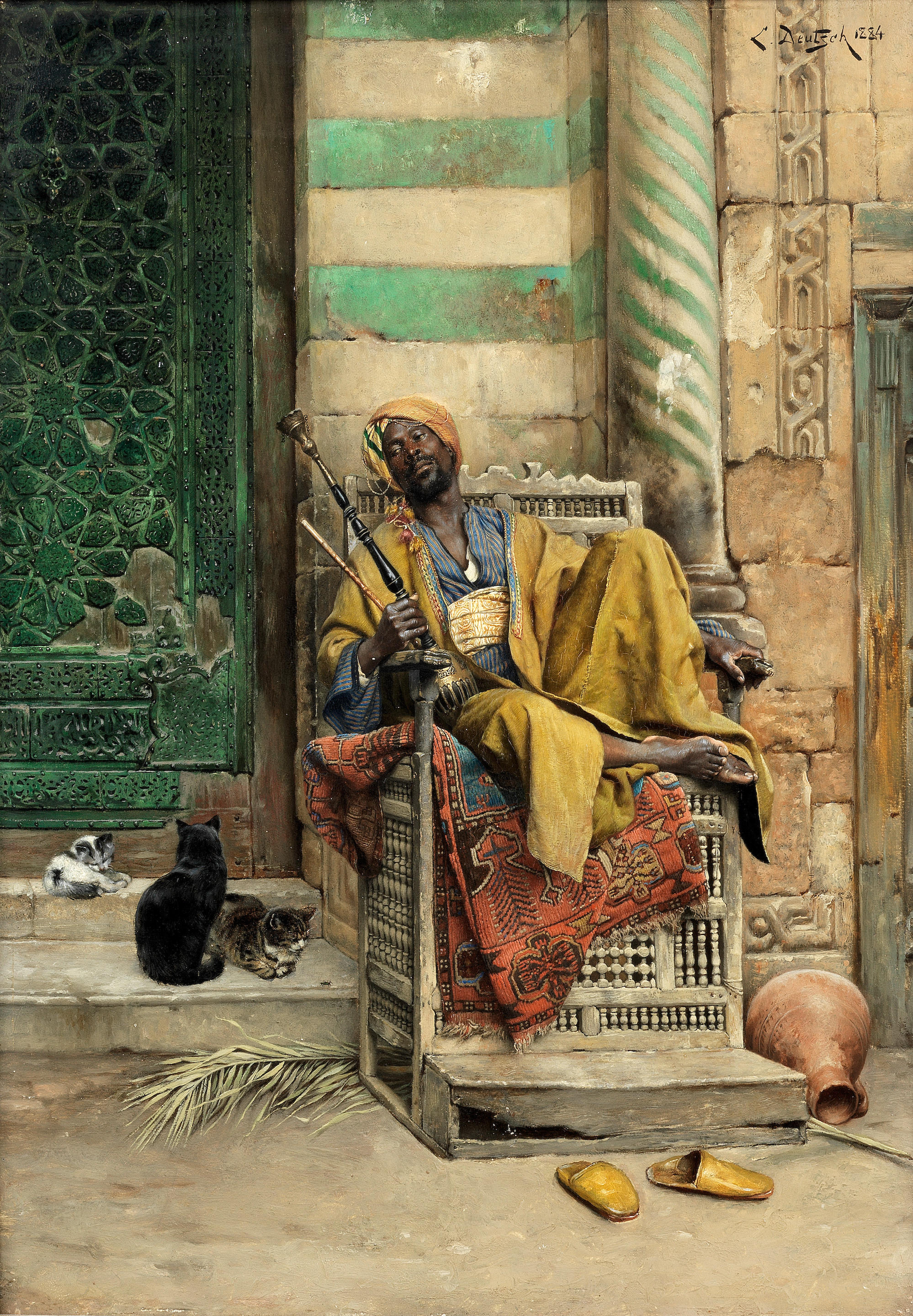
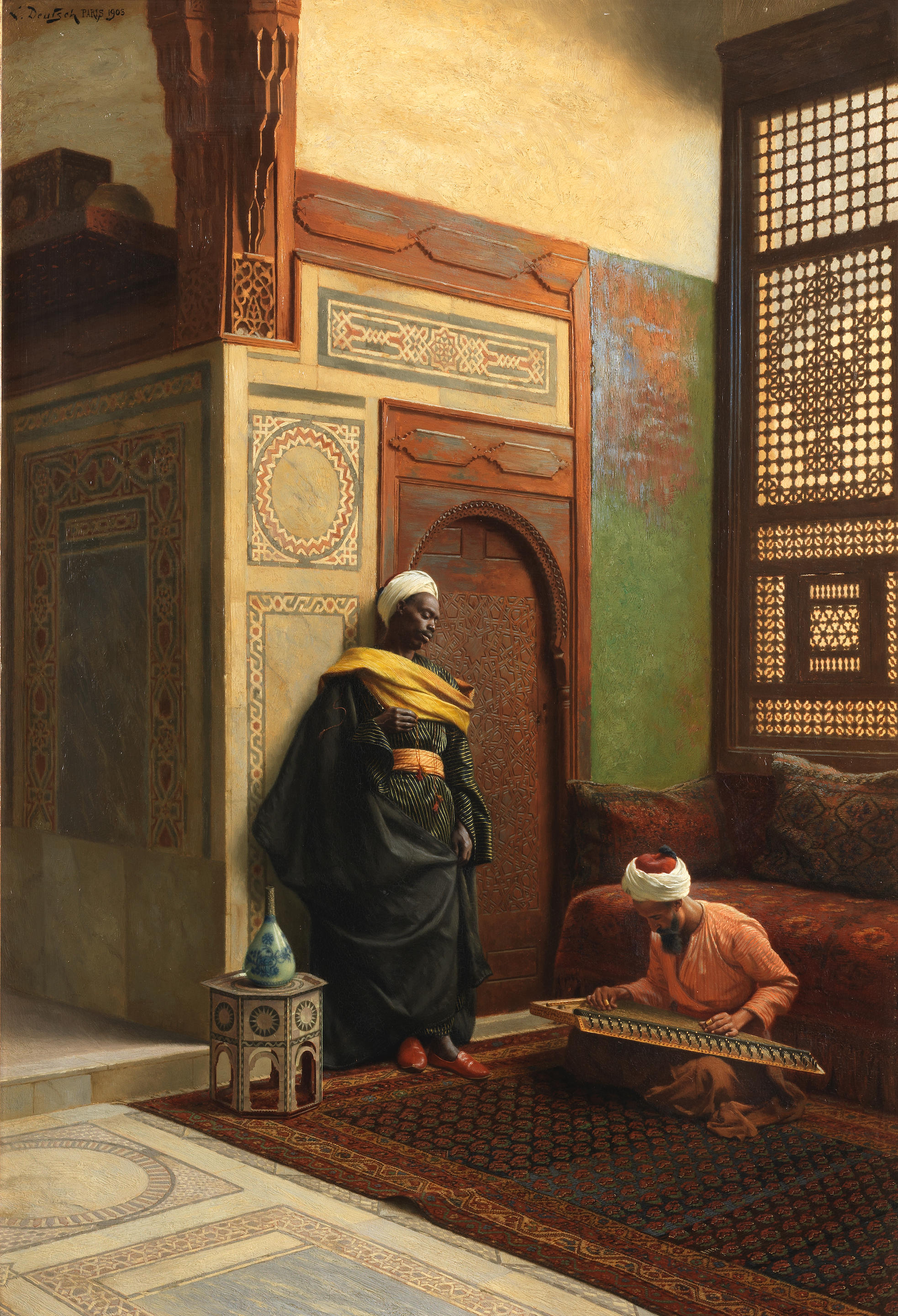



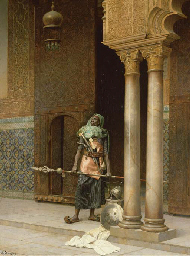
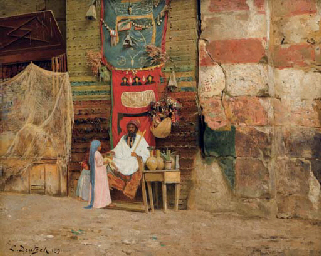
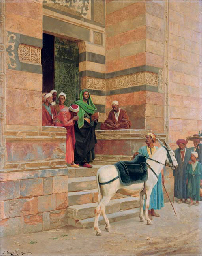
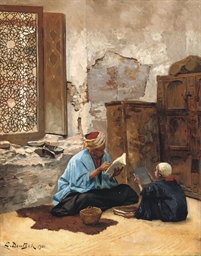
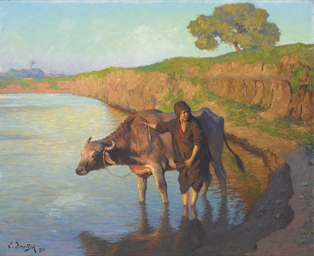



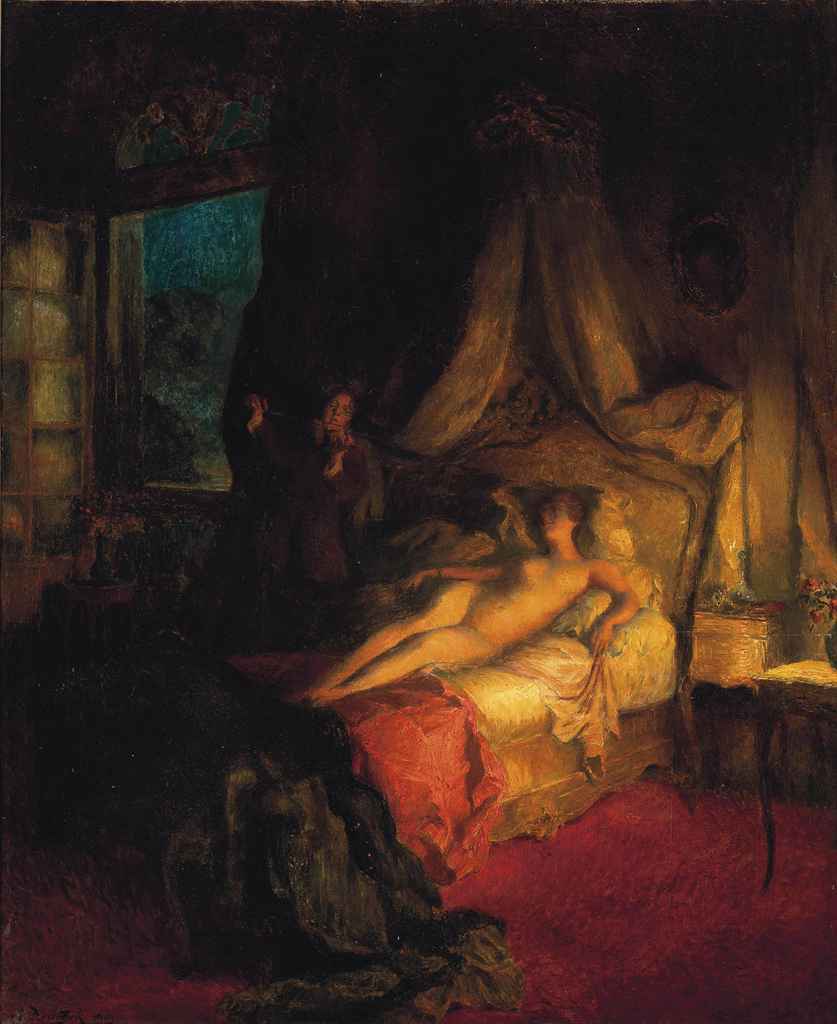
Testen Sie LotSearch und seine Premium-Features 7 Tage - ohne Kosten!
Lassen Sie sich automatisch über neue Objekte in kommenden Auktionen benachrichtigen.
Suchauftrag anlegen